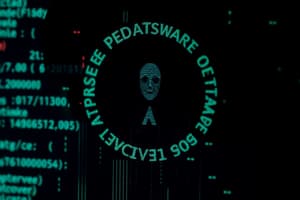Podcast
Questions and Answers
What is the primary function of spyware?
What is the primary function of spyware?
- To modify system settings to improve performance.
- To encrypt files and demand ransom for their release.
- To spread through networks and cause system crashes.
- To steal personal information about a user's computer activities. (correct)
Which method do cyber criminals often use in phishing schemes?
Which method do cyber criminals often use in phishing schemes?
- Disguising emails as coming from trusted sources. (correct)
- Creating fake operating system dialogue windows.
- Installing software that monitors user activity.
- Locking users out of their personal files.
What distinguishes ransomware from other types of malware?
What distinguishes ransomware from other types of malware?
- It disguises itself as a legitimate application.
- It demands a ransom payment to regain access to files. (correct)
- It is designed to steal a user's keystrokes.
- It modifies security settings to facilitate attacks.
What misleading practice is often employed by scareware?
What misleading practice is often employed by scareware?
During the late 1980s, what method was commonly used for ransomware payments?
During the late 1980s, what method was commonly used for ransomware payments?
What is a common characteristic of spyware distribution?
What is a common characteristic of spyware distribution?
Which of the following threats is classified as fraud rather than malware?
Which of the following threats is classified as fraud rather than malware?
What is a common tactic used by scareware to influence users?
What is a common tactic used by scareware to influence users?
Flashcards are hidden until you start studying
Study Notes
Malware Overview
- Malware is software designed to disrupt, damage, or gain unauthorized access to computer systems.
- Types of malware include viruses, spyware, scareware, ransomware, phishing, spam, and social engineering.
Spyware
- Spyware collects user information and tracks computer activities.
- Common features include activity trackers, keystroke logging, and data capture.
- Often modifies security settings to evade detection and can bundle with legitimate software or Trojan horses.
- Shareware websites frequently contain spyware.
Scareware
- Scareware manipulates users into taking actions based on fear tactics.
- It often presents forged pop-up windows mimicking system messages, claiming systems are at risk.
- Encourages users to execute specific programs, which can lead to malware infections.
Ransomware
- Ransomware blocks access to files or systems, demanding ransom for retrieval.
- Initially emerged in the late 1980s, with payments sent via traditional mail; now typically demands cryptocurrency or credit card payments.
- Targets individuals and organizations across various sectors.
Phishing
- A form of fraud where cybercriminals impersonate trusted sources to gather sensitive information like login credentials.
- Involves sending fraudulent emails or messages that trick recipients into installing malware or sharing personal information.
Spam
- Spam refers to unsolicited emails, often used for advertisement.
- It can carry harmful links or deceptive content aimed at extracting sensitive information, such as social security numbers and bank account details.
- Typically generated from networks of compromised computers infected by viruses or worms.
Social Engineering
- Encompasses malicious activities that exploit human interactions and psychological manipulation.
- Aims to deceive users into making security mistakes or divulging sensitive information, often facilitating unauthorized access to systems.
Studying That Suits You
Use AI to generate personalized quizzes and flashcards to suit your learning preferences.



